Fantini Cosmi L23EM1A Handleiding
Fantini Cosmi
Thermostaat
L23EM1A
Bekijk gratis de handleiding van Fantini Cosmi L23EM1A (2 pagina’s), behorend tot de categorie Thermostaat. Deze gids werd als nuttig beoordeeld door 71 mensen en kreeg gemiddeld 4.3 sterren uit 36 reviews. Heb je een vraag over Fantini Cosmi L23EM1A of wil je andere gebruikers van dit product iets vragen? Stel een vraag
Pagina 1/2

To get access to the parameter configuration menu, press button ■ + for 5 seconds.
With button ■ select the parameter to be modified. or
Press button ■ to display the value.
By keeping button ■ pressed, use button to set the desired value. or
When button ■ is released, the newly programmed value is stored and the following parameter is displayed.
To exit from the setup, press button ■ or wait for 30 seconds.
PAR RANGE DESCRIPTION
SCL 1°C;
2°C;
°F
Readout scale (see table of input specifications)
Caution: upon changing the value, it is then absolutely necessary to the param-SCL reconfigure
eters relevant to the absolute and relative temperatures ( , , , etc..)SPL SPH 1SP 1HY
SPL -50°...SPH Minimum limit for setting1SP
SPH SPL...150° Maximum limit for setting.1SP
1SP SPL... SPH Setpoint (value to be maintained in the room).
1CM HY; PID Control mode.
With =H you select control with hysteresis: parameters , are used.1CM Y1HY 1T0 1T1 and
With =PID you select a Proportional-Integral-Derivative control mode: parameters , , 1CM 1PB 1IT
1DT 1AR 1CT, , will be used
1CH REF; HEA Refrigerating (REF) or Heating (HEA) control mode.
1CM=HY
1HY 0...19.9° OFF/ON thermostat di ferential. With =0 the output is always of 1HY .
1T0 0...30min Minimum o f time.f
After output been turned f, it remains inactive minutes 1 has of for 1T0 regardless of the
temperature value measured.
1T1 0...30min Minimum on time. ( ).the following parameter will be 1PF
After output 1 has been turned on, it remains active for 1T1 minutes regardless of the temperature
value measured.
1CM=PID
1PB 0...19.9° Proportional bandwidth.
Temperature takes by changing control place the
ON of the the closer the time output: temperature
to the the less of setpoint, time activation. A small
proportional band increases the promptness of
response of the to system temperature variations,
but make it stable. A tends to less purely
proportional stabilises temperature control the
within proportional band but the does not cancel
the deviation from setpoint.
With =0 the output is always o1PB .
1IT 0...999s Integral action time.
The error cancelled an steady-state is by inserting
integral action. integral action time, determines The
the speed the with which steady-state temperature
is achieved, but high ( low) may be a speed 1IT the
cause overshoot instability in of and the response.
With =0 the integral control is disabled.1IT
1DT 0...999s Derivative action time.
Response overshoot may be reduced by inserting
a derivative Action. A high derivative action (1DT
high) makes system very sensitive the to small
temperature variation causes instability s and . With
1DT=0 the derivative control is disabled.
1AR 0...100% Reset of integral action time referred to 1PB
Decreasing reduces integral action zone, consequently the parameter 1AR the control and the
overshoot (see figure on paragraph ).1IT
1CT 1...255s Cycle time.
It’s the the ON changes. The the to controlled period in which output time quicker system be
reacts to the smaller the order to temperature variations, cycle time must be, in obtain higher
temperature stability and less sensitivity to load variations.
1PF ON/OFF Output state in case of probe failure.
OAU NON;
THR;
AL0;
AL1
AUX output operation.
NON : output disabled (always o f). (fthe next parameter will be ATM)
THR: output programmed for second thermostat control ( ).the next parameter will be 2SM
AL0: contacts open when an alarm condition occurs (the next parameter will be ATM).
AL1: contacts make when an alarm condition occurs (the next parameter will be ATM).
OAU=THR
2SM ABS;
REL
Setpoint 2 mode.
Channel ma 2 et s point y be ab olus te (2SM=ABS , ) or a di teren ial t erela iv t s t o etpoin 1 (2SM=REL)
2SM=ABS
2SP SPL...SPH Auxiliary output switchover temperature ( )the next parameter will be 2CH
2SM=REL
2DF -19.9...19.9° Temperature di ferential relative to The auxiliary output setpoint is equal to f1SP. 1SP 2DF+
ON/OFF refrigerating control
( =H1CM Y, =REF)1CH
ON/OFF heating control
( =H1CM Y, =HEA)1CH
1SP 1SP+1HY T[°]
ON
OFF
1SP1SP-1HY T[°]
ON
OFF
Time
Temperature
Process
temperature
Overshoot Steady-state error
1PB
1SP
Time
Temperature
Process
temperature
Overshoot
1PB1PBx1AR%
integral control
action area
1SP
Time
Temperature
Process
temperature
Overshoot
1PB
1SP
2SP 2SP+2HY T[°]
ON
OFF
2SP2SP-2HY T[°]
ON
OFF
ON/OFF control in refrigeration
( =ABS, =REF)2SM 2CH
ON/OFF control in heating
( =ABS, =HEA)2SM 2CH
1SP+2DF
1SP
2DF>0 1SP+2DF+2HY T[°]
ON
OFF
1SP
1SP+2DF
2DF<0
1SP+2DF-2HY T[°]
ON
OFF
ON/OFF control in refrigeration. Setpoint 2
relative to setpoint 1 ( =THR, =REF)OAU 2CH
ON/OFF control in heating. Setpoint 2
relative to setpoint 1 ( =THR, =HEA)OAU 2CH
Power supply
L03BI- 12Vac/dc ±10%, 3W
L03BM- 230 Vac±10%, 50/60Hz, 3W
Relay outputs (L03B---)
OUT1 16(4)A 240Vac
OUT2 16(4)A 240Vac
Inputs
see table of input specifications
Measurement range
see table of input specifications
Measurement accuracy
see table of input specifications
Operating conditions
-10 … +50°C; 15%...80% r.H.
CE (Reference Norms)
EN60730-1; EN60730-2-9;
EN55022 (Class B); EN50082-1
Front protection
IP40
OAU=THR
2CH REF; HEA Refrigerating control (REF) or heating control mode (HEA) for the auxiliary output.
2HY 0...19.9° Di ferential of thermostat 2. With =0 the auxiliary output always remains of2HY .
2T0 0...30min Minimum o f time.f
After output 2 has been turned of f, it remains inactive for 2T0 minutes regardless of the temperature
value measured.
2T1 0...30min Minimum on time.
After output 2 has been turned on, it remains active for 2T1 minutes regardless of the temperature
value measured.
2PF ON/OFF Auxiliary output state in case of probe failure.
ATM NON;
ABS;
REL
Alarm hre hold managemen t s t.
NON t : all empera t ure alarms are ed inhibit (t t he ollowing f parame er will be SB).
ABS: t vhe alues programmed in ALA A and AH s srepre en het t real alarm hre t holds.
REL: the programmed values in ALR and AHR are alarm diff teren ials tre erredf o 1SP and 1SP Y+1H .
ATM=ABS
ALA -50°...AHA Low temperature alarm threshold.
AHA ALA...150° High temperature alarm threshold.
ATM=REL
ALR -12.0...0° Low temperature alarm di ferential. f
With =0 the low temperature alarm is excludedALR
AHR 0...12.0° High temperature alarm di ferential. f
With =0 the high temperature alarm is excludedAHR
ATD 0...120min Delay before alarm temperature warning.
SB NO/YES Stand-by button enabling.
INP 0mA/4mA,
T1/T2
ST1/SN4
Sensor input selection (see table of input specifications).
Warning: “0mA/4mA”, “T1” and “T2” are not available
RLO -19.9...RHI Minimum range value
RLO takes the minimum value measured by the transmitter (i.e. the value matching 0V, 0/4mA).
RHI RLO...99.9 Maximum range value
RHI takes the maximum value measured by the transmitter (i.e. the value matching 1V, 20mA)
OS1 -12.5...12.5° T1 oset.Probe
TLD 1...30min Delay for minimum temperature (TLO) and maximum temperature (THI) logging.
SIM 0...100 Display slowdown
ADR 1...255 address for PC communication (not available)
1SP
1SP-ALR
T[°]
ON
OFF
1SP+1HY+AHR
1SP1SP-1HY-ALR 1SP+AHR
T[°]
ON
OFF
Temperature alarm with relative thresholds,
refrigerating control (ATM 1CH=REL, =REF)
Temperature alarm with relative thresholds,
heating control (ATM 1CH=REL, =HEA).
L03BM--
1112
230V~
OUT2
18 17 16
OUT1
21 20 19
2 3
16(4)A16(4)A
DISPLAY
During normal operation, the display shows either the temperature measured or one of the following indications:
Controller in stand-by Controller in autotuning
Probe T1 overrange or failure In tuning: timeout1 error
Room high temperature alarm In tuning: timeout2 error
Room low temperature alarm In tuning: overrange error
MENU INFO
The information available in this menu is:
Maximum temperature recorded Keypad state lock
Minimum temperature recorded
Access to menu and information displayed.
Press and immediately release button ■.
With button ■ select the data to be displayed. or
Press button ■ to display value.
To exit from the menu, press button ■ or wait for 10 seconds.
Reset of THI, TLO recordings
With button ■ select the data to be reset. or
Display the value with button ■.
While keeping button ■ pressed, use button .
CHANNEL 1 SETPOINT (display and modification of desired temperature value)
P se re andss relea
bu
tt
on
■ L : the
ED s 1L1 blinks, the di play shows SP 1 ec et a oc t for s ond and hen he t t s point ss ia ed value.
P ress buttons■ o or t se het t desired value (adjus is witment thin minimum the SPL and maximum SPH tlimi ).
To store the new value press button ■ , or wait for 10 seconds.
To go back to normal mode without saving the new value, press ■.
CHANNEL 2 SETPOINT
With auxiliary output ( the set as thermostat control ■ =THR), it possible modify setpoint during operation OAU ’s to 2 the normal
of the controller.
Press and release button ■ : LED L2 blinks, display shows 2S if setpoint is absolute the the P for 1 second 2 an threshold
( =ABS), alternatively display shows2SM the 2DF, if setpoint is relative setpoint ( =REL), value 2 a threshold to 1 2SM then the
associated to the parameter appears.
Press buttons ■ to set the desired value. or
To store the new value press button ■ or wait for 10 seconds.
To go back to normal mode without saving the new value, press ■.
STAND-BY
B
u
tt ss fon , when pre ed or 3 second he on rollers, allows t c t to be pu t on a standby tor ou put tcon rolt o be resumed (wi th SB=YES only).
KEYPAD LOCK
The attempted the controllers keypad lock avoids undesired, potentially dangerous operations, which might be when is operating
in public menu, =YES inhibit functions buttons. a place. In the INFO set parameter LOC to all of the To normal resume operation
of keypad, adjust setting so that LOC=NO.
CONTROLLER AUTOTUNING IN PID MODE
Before starting
In the mode set =PID; that matches the mode setup (see configuration parameters): 1CM make sure 1CH desired operation
( =REF for refrigerating control, =HEA for heating control); then adjust setpoint at the desired value.1CH 1CH 1SP
Start autotuning
During operation, keep buttons 3 blinks display normal + pressed for seconds. 1CT on the . + or set the With cycle
time in define dynamic be order to the of the process to controlled. To the press ; to start abort autotuning function, autotuning
press + or wait for 30 seconds.
During autotuning
During entire autotuning phase, display TUN with actual temperature measured. power failure, the the alternates the In case of
when power is resumed, initial autotest phase, resumes autotuning function. after the the controller the To the abort autotuning,
without modifying previous parameters, keep button the control pressed for seconds. the has place 3 After autotuning taken
successfully, the controller updates the control parameters and start to control.
Errors
If the autotuning function failed, the display shows an error code:
E1 the controller not the the Increase timeout1 error: could bring temperature within proportional band.■ in heating 1SP case of
control, vice versa, decrease in case of refrigerating control and re-start the process.1SP
E2 the has not ended the Re-start the timeout2 error: autotuning within maximum time allowed (1000 cycle times). autotuning ■
process and set a longer cycle time 1CT.
E3 temperature overrange: check was caused by probe malfunction, that the error not a then decrease ■ in heating 1SP case of
control, vice versa increase in case of refrigerating control and then re-start the process.1SP
To eliminate the error indication and return to the normal mode, press button ■.
Control improvement
To reduce overshoot, reduce the integral action reset ■1AR
To increase the
response speed
o
f t the em syst, reduce
he propor
t
ional band
.e
To reduce swings in steady-state temperature, increase integral action time the
■ system stability1IT;
is thus increased, although
its response speed is decreased.
To the speed of response to the the increase variations in temperature, increase derivative action time ■ Caution: high 1DT. a
value makes the system sensitive to small variations and it may be a source of instability.
RECALIBRATION
Have a precision reference thermometer or a calibrator to hand. Ensure that ■ =0 and =0.OS1 SIM
Switch the controller o f then on again.f ■
During the auto-test phase, press buttons ■ and keep them pressed till the controller shows + 0AD.
With buttons ■ : allows calibration 0, inserting correction over whole and select or 0AD SAD 0AD a of a constant the scale
of a of the top part of the scale a the measurement. SAD allows calibration measurement with proportional correction between
calibration point and 0.
Press ■ to the and then + or to the read the the display value use make value coincide with value measured by
reference instrument.
Exit from calibration by pressing button ■.
The
L03B--
controller
, size 71x98x61 (WxHxD), is be secured rail in such position ensure liquid mm to to a DIN a as to that no
infiltrates causing serious damage and compromising safety;
Make sure electrical connections comply with “wiring diagrams”. that the paragraph To the eects of reduce electromagnetic ■
disturbance, keep the sensor and signal cables well separate from the power wires.
Place the probe T1 inside the room in a point that truly represents the temperature of the stored product. ■
OUT1
OUT2
L1
L2
Channel 1 output
Channel 2 output
Alarm
Channel 1 setpoint modification
Channel 2 setpoint modification
Fig.1 - Front panel
Thank you for having chosen a Fantini Cosmi product. Before installing the instrument, please read these instructions carefully
to ensure maximum performance and safety.
L03B--/L23EM1A INSTRUCTION FOR USE
Info / Enter button Modify Setpoint 1 / Decrease button
Increase / Modify Setpoint 2 button Exit / Stand-by button
MODEL INPUT
RANGE [MEASUREMENT ACCURACY]
SCL=1°C SCL=2°C SCL=°F
L03B--
INP=ST1 PTC 1000 Ω
(LS120)
-40/-19.9 ÷ 99.9/105°C
[<±0.3°C(-40÷130°),±1°C]
-40 ÷ 105°C
[<±0.3°C (-40÷130°),±1°C]
-40 ÷ 221°F
[<±0.6°F (-40÷221°),±2°F]
INP=SN4 NTC 10K Ω
(LS130)
-40/-19.9 ÷ 99.9/105°C
[<±0.3°C(-40 100÷ °), ±1°C]
-40 ÷ 105°C
[<±0.3°C (-40÷100°),±1°C]
-40 ÷ 221°F
[<±0.6°F (-40÷210°),±2°F]
Via Dell’Osio 6
20090 Caleppio di Settala MI ITALIA
Phone no. +39 02 95682.222
Fax no. +39 02 95307006
Web: www.fantinicosmi.it
e-mail: export@fantinicosmi.it
AC1-5
L03BI--
1112
12Vac/dc
OUT2
18 17 16
OUT1
21 20 19
2 3
16(4)A16(4)A
L23EM1A
12 11
230V~
OUT1
21 20 19
rH
V
2 3 4
VIN V+V-
16(4)A
L23EM1A 0÷1V (LS160A) RLO÷RHI [< ± 3mV] -----

Per accedere al menù di configurazione dei parametri, premere per 5 secondi i tasti ■ + .
Con i tasti ■ selezionare il parametro da modificare. o
Premere il tasto ■ per visualizzare il valore.
Mantenendo premuto ■ agire con i tasti per impostare il valore desiderato. o
Al rilascio del tasto ■ il nuovo valore viene emorizzato e viene visualizzato il parametro successivo.m
Per uscire dal setup premere il tasto ■ o attendere 30 secondi.
PAR RANGE DESCRIZIONE
SCL 1°C;
2°C;
°F
Scala di lettura (vd. tabella caratteristiche ingresso)
Attenzione: cambiando il valore di SCL vanno assolutamente i parametri riconfigurati riguardanti
le temperature assolute e relative ( , , , ecc..)SPL SPH 1SP 1HY
SPL -50°...SPH Limite minimo per la regolazione di 1SP.
SPH SPL...150° Limite massimo per la regolazione di 1SP.
1SP SPL... SPH Temperatura di commutazione (valore che si desidera mantenere).
1CM HY; PID Modalità di controllo.
Con Y1CM=H si seleziona la regolazione con isteresi: nel controllo vengono usati i parametri
1HY 1T0 1T1 1CM, e . Con =PID si seleziona la regolazione Proporzionale-Integrativa-Derivativa:
nel controllo vengono usati i parametri , , , , 1PB 1IT 1DT 1AR 1CT.
1CH REF; HEA Modo di regolazione refrigerazione (REF) o riscaldamento (HEA) dell’uscita 1.
1CM=HY
1HY 0...19.9° fferenziale del termostato. =0 l’uscita rimane sempre spenta. Di Con 1HY
1T0 0...30min Tempo minimo di spegnimento
Dopo uno spegnimento, l’uscita 1 rimane disattivata per 1T0 minuti indipendentemente valore dal
della temperatura.
1T1 0...30min Tempo minimo di attivazione. (Il parametro successivo sarà )1PF
Dopo una accensione, l’uscita attivata per minuti indipendentemente valore 1 rimane 1T1 dal
della temperatura.
1CM=PID
1PB 0...19.9° Banda proporzionale.
Il della il controllo temperatura avviene variando
tempo di ON la è dell’uscita: più temperatura vicina
al minore e il di Una setpoint, ’ tempo attivazione.
banda proporzionale piccola aumenta la prontezza
del sistema alle di variazioni temperatura, ma tende
a renderlo meno Un stabile. controllo puramente
proporzionale stabilizza temperatura all’interno la
della ma non lo banda proporzionale, annulla
scostamento dal setpoint.
Con 1PB=0 l’uscita rimane sempre spenta.
1IT 0...999s Tempo dell’azione integrativa.
L’inserimento un’azione integrativa annulla di
l’errore regime. tempo dell’azione integrativa a Il
determina velocità cui si raggiunge la con la
temperatura regime, un’elevata velocità (1I di ma T
basso) può essere causa sovraelongazio di ne e di
instabilità nella risposta.
Con 1IT=0 il controllo integrativo viene disabilitato.
1DT 0...999s Tempo dell’azione derivativa.
L’inserimento un’azione derivativa diminuisce di
la nella sovraelongazione risposta. Un’azione
derivativa elevata (1D alto) sistema molto T rende il
sensibile piccole variazioni temperatura, alle di e
può portare instabilità.
Con 1DT=0 il controllo derivativo viene disabilitato.
1AR 0...100% Reset dell’azione integrativa riferito a 1PB.
Diminuendo parametro si restringe zona azione controllo integrativo, il 1AR la di del e di
conseguenza la sovraelongazione (vedi figura nel parametro 1IT)
1CT 1...255s Tempo di ciclo.
E il del il di ON il ’ periodo all’interno quale varia tempo dell’uscita. Quanto più velocemente
sistema controllare risponde variazioni temperatura, tanto deve essere da alle della minore il
tempo ciclo, per ottenere una maggiore stabilità temperatura, una sensibilità di della e minore
alle variazioni di carico.
1PF ON/OFF Stato dell’uscita con sonda difettosa.
OAU NON;
THR;
AL0;
AL1
Funzionamento dell’uscita ausiliaria AUX.
NON: uscita disabilitata (sempre spenta). (Il prossimo parametro sarà ATM).
THR: uscita programmata come secondo termostato. ( )Il prossimo parametro sarà 2SM
A
L0 aper ura: t
dei on c tatti al presen art si di ondi una c zione di allarme. (Il pro imo paramess tro arà s ATM)
A
L1: chiu uras
dei on c tatti al presen art si di ondi una c zione di allarme. (Il pro imo paramess tro arà s ATM)
OAU=THR
2SM ABS;
REL
Modalità setpoint 2.
Il
se
t
point del canale 2 può essere assoluto (2SM=ABS), o un differenziale relativo al se point t 1 (2SM=REL)
2SM=ABS
2SP SPL...SPH Temperatura di commutazione dell’uscita ausiliaria ( )Il prossimo parametro sarà 2CH
2SM=REL
2DF -19.9...19.9° fferenziale di temperatura rispetto a . Il setpoint dell’uscita ausiliaria è pari a Di 1SP 1SP 2DF+
Controllo ON/OFF in refrigerazione
( =H1CM Y, =REF)1CH
Controllo ON/OFF in riscaldamento
( =H1CM Y, =HEA)1CH
1SP 1SP+1HY T[°]
ON
OFF
1SP1SP-1HY T[°]
ON
OFF
Tempo
Temperatura
1PB
1SP
Sovraelongazione
Temperatura
processo
Errore a regime
Tempo
Temperatura
1PB1PBx1AR%
Zona di azione
controllo integrale
1SP
Sovraelongazione
Temperatura
processo
Tempo
Temperatura
1PB
1SP
Temperatura
processo
Sovraelongazione
2SP 2SP+2HY T[°]
ON
OFF
2SP2SP-2HY T[°]
ON
OFF
Controllo ON/OFF in refrigerazione
( =ABS, =REF)2SM 2CH
Controllo ON/OFF in riscaldamento
( =ABS, =HEA)2SM 2CH
1SP+2DF
1SP
2DF>0 1SP+2DF+2HY T[°]
ON
OFF
1SP
1SP+2DF
2DF<0
1SP+2DF-2HY T[°]
ON
OFF
Controllo ON/OFF in refrigerazione. Setpoint 2
relativo al setpoint 1 ( =THR, =REF)OAU 2CH
Controllo ON/OFF in riscaldamento. Setpoint 2
relativo al setpoint 1 ( =THR, =HEA)OAU 2CH
Alimentazione
L03BI-- 12Vac/dc ±10%, 3W
L03BM--/L23EM1A V230 ac±10%, 50/60Hz, 3W
Uscite relè (L03B--/L23EM1A)
OUT1 16(4)A
OUT2 16(4)A
Ingressi
vd. tabella caratteristiche ingresso
Range di Misura
vd. tabella caratteristiche ingresso
Precisione di misura
vd. tabella caratteristiche ingresso
Condizioni operative
-10 … +50°C; 15%...80% U.R.
CE (Norme di Riferimento)
EN60730-1; EN60730-2-9;
EN55022 (Classe B); EN50082-1
Protezione frontale
IP40
OAU=THR
2CH REF; HEA Modo di regolazione refrigerazione (REF) o riscaldamento (HEA) per l’uscita ausiliaria
2HY 0...19.9° fferenziale del termostato 2. Con =0 l’uscita ausiliaria rimane sempre spenta.Di 2HY
2T0 0...30min Tempo minimo di spegnimento.
Dopo uno spegnimento, l’uscita 2 rimane disattivata per 2T0 minuti indipendentemente dal
valore della temperatura.
2T1 0...30min Tempo minimo di attivazione
Dopo una accensione, l’uscita 2 rimane attivata per 2T1 minuti indipendentemente dal valore
della temperatura.
2PF ON/OFF Stato dell’uscita 2 con sonda difettosa
ATM NON;
ABS;
REL
Gestione soglie allarme.
NON i : t ttu gli allarmi di in erde tempera urat sono t tti. (il successivo paramen ro visualizzat to sarà SB)
ABS: i valori programmati in rappresentano le reali soglie d’allarmeALA AHA e
REL: i valori programmati in sono i differenziali d’allarme rispetto a 1S e 1SP+1HYALR AHR e P
ATM=ABS
ALA -50°...AHA Soglia d’allarme di bassa temperatura
AHA ALA...150° Soglia d’allarme di alta temperatura
ATM=REL
ALR -12.0...0° fferenziale d’allarme di bassa temperatura. Di
Con ALR=0 l’allarme di bassa temperatura viene escluso.
AHR 0...12.0° fferenziale d’allarme di alta temperatura. Di
Con AHR=0 l’allarme di alta temperatura viene escluso.
ATD 0...120min Ritardo nella segnalazione dell’allarme di temperatura
SB NO/YES Abilitazione tasto stand-by
INP 0mA/4mA,
T1/T2
ST1/SN4
Selezione del sensore in ingresso. (vd. tabella caratteristiche ingresso)
nb: “0mA/4mA”, “T1” e “T2” non sono disponibili
RLO -19.9...RHI Range minimo della scala
Ad RL ieneO v assegna valoreto il minimo mi dal ra s tura o t sme orettit ( tcorrisponden e a V0 , 0 )/4mA
RHI RLO...99.9 Range massimo della scala
Ad aRHI viene s tsegna o il valore mas urasimo mi s to dal ra me t s ttitore orri c( s tponden e a 1V, 20mA)
OS1 -12.5...12.5° Correzione misura sonda T1
TLD 1...30min Ritardo della memorizzazione delle temperature minime (TLO) e massime (THI) raggiunte.
SIM 0...100 Rallentamento display
ADR 1...255 Indirizzo per la comunicazione con PC (funzione non disponibile)
1SP
1SP-ALR
T[°]
ON
OFF
1SP+1HY+AHR
1SP1SP-1HY-ALR 1SP+AHR
T[°]
ON
OFF
Allarme di temperatura con soglie relative, con-
trollo in refrigerazione (ATM 1CH=REL, =REF)
Allarme di temperatura con soglie relative, con-
trollo in riscaldamento (ATM 1CH=REL, =HEA)
L03BM--
1112
230V~
OUT2
18 17 16
OUT1
21 20 19
2 3
16(4)A16(4)A
L03BI--
1112
12Vac/dc
OUT2
18 17 16
OUT1
21 20 19
2 3
16(4)A16(4)A
VISUALIZZAZIONI
In funzionamento normale sul display viene visualizzata la temperatura rilevata oppure una delle indicazioni seguenti:
Strumento in stand-by Strumento in autotuning
Over range o rottura sonda In tuning: errore di timeout1 T1
Allarme alta temperatura In tuning: errore di timeout2
Allarme di bassa temperatura In tuning: errore di over range
MENU INFO
Le informazioni disponibili nel menù info sono:
Temperatura massima registrata sonda 1 Stato della tastiera (blocco)
Temperatura minima registrata sonda 1
Accesso al menù e visualizzazione informazioni.
Premere e subito rilasciare il tasto ■ .
Con i tasti ■ selezionare il dato da visualizzare. o
Premere il tasto ■ per visualizzare il valore.
Per uscire dal menù, premere il tasto ■ o attendere 10 secondi.
Reset delle memorizzazioni THI, TLO
Con i tasti ■ selezionare il dato da res ttare. o e
Visualizzare il valore con il tasto ■.
Mantenendo premuto il tasto ■ premere il tasto .
SETPOINT CANALE 1 (visualizzazione e modifica valore di temperatura desiderato)
P e remere rila iaresc
il t
a o st
■ s: , il led L1 lampeggia il di
pla uali pery vis zza 1 sec 1SP a oc o e .ondo quindi il alore v ss iatal s t tpoin
A i i gire con tast
■
o per impos tare il valore desiderato è (la regolazione compresa en ro il limit te minimo SPL e massimo .SPH)
Per memorizzare il nuovo valore premere il tasto ■ , o attendere 10s.
Per ritornare in modalità normale senza salvare il nuovo valore premere ■.
SETPOINT CANALE 2
con come l’uscita ausiliaria impostata termostato ( ■ =THR), possibile modificare setpoint durante funzionamento OAU è il 2 il
normale del regolatore.
premere e rilasciare il tasto ■ : il led L2 lampeggia, il display visualizza per 1 2SPsecondo , se il se point t 2 è aimpost to in modo asso-
lu
t
o (2SM=ABS), oppure visualizza F2D , se il se point t 2 è relativo se poin al t t 1 (2SM=RE L) quindi, il valore associato al parametro.
agire con i tasti ■ o per impostare il valore desiderato.
per memorizzare il nuovo valore premere il tasto ■ , o attendere 10s.
per ritornare in modalità normale senza salvare il nuovo valore premere ■.
STAND-BY
Il
t
a o st
, premu o per 3 t sec condi,onsen e di tcommutare lo stat to del regola ore f tra opera i iv tà delle uscite e standby (solo c onSB=YES).
BLOCCO DELLA TASTIERA
Il dei inde il blocco tasti impedisce operazioni siderate, potenzialmente dannose, che possono avvenire qualora regolatore operi
in Per i comandi da =YES nel menù INFO; la normale ambiente pubblico. inibire tutti tastiera impostare LOC per ripristinare
funzionalità riprogrammare LOC=NO.
AUTOTUNING DEL REGOLATORE IN MODALITA’ PID
Prima di iniziare
In modalità setup (v . di parametri configurazione): impostare 1CM=PID; accertarsi che corrisponda1CH al modo di funzionamento
voluto ( =REF per refrigerazione, =HE1CH 1CH A per riscaldamento); fissare il setpoint al valore desiderato.1SP
Avvio della funzione
Durante funzionamento normale, mantenere premuti tasti per 3 secondi. Sul display lampeggia il i + 1CT; con + o
il di ciclo in modo da la dinamica del da Per la di impostare tempo caratterizzare processo controllare. abbandonare funzione
autotuning premere ; per iniziare l’autotuning premere o attendere 30s. +
Durante l’autotuning
Durante tutta fase autotuning display visualizza alternativamente valore temperatura misurata. la di il TUN e il della Se manca
l’alimentazione, successiva alla riaccensione, dopo la fase iniziale di autotest, strumento riprende lo la funzione autotuning. di Per
abbandonare funzione autotuning, senza modificare parametri controllo, mantenere premuto per 3 secondi tasto la di i di il .
Terminato con successo l’autotuning il controllore aggiorna il valore dei parametri di controllo, e inizia a regolare.
Errori
Se la funzione di autotuning non p2-ha esito positivo, sul display lampeggia un codice d’errore:
E1 errore di il timeout1:
controllore
non è a la riuscito portare
temperatura all’interno
della
banda proporzionale.
Aumentare 1SP
nel caso di controllo in riscaldamento, viceversa, diminuire ffreddamento e riavviare la procedura.1SP in ra
E2 errore di timeout2: l’autotuning non è il terminato entro tempo massimo stabilito (1000 tempi ciclo). di Riavviare procedura la ■
di autotuning e impostare un tempo di ciclo maggiore.
E3 over range temperatura: controllare che l’errore sia causato un’anomalia sonda, quindi diminuire di non da della ■1SP nel
caso di controllo in riscaldamento, viceversa aumentare ffreddamento e riavviare la procedura.1SP in ra
Per eliminare l’indicazione d’errore e ritornare in modalità normale premere il tasto ■.
Miglioramento del controllo
per ridurre la sovraelongazione diminuire il reset dell’azione integrativa ■1AR;
per aumentare
la del prontezza
sistema diminuire banda la
proporzionale
attenzione:1PB;
essere meno stabile (oscillazione della temperatura);
per ridurre oscillazioni temperatura regime aumentare tempo dell’azione integrativa le della a il ■ si aumenta così stabilità 1IT; la
del sistema, ma si diminuisce la sua prontezza di risposta;
per aumentare velocità risposta variazioni temperatura aumentare tempo dell’azione derivativa la di alle di il ■ attenzione: 1DT;
un valore elevato rende il sistema sensibile alle piccole variazioni e può essere fonte di instabilità.
RICALIBRAZIONE
munirsi di un termometro di precisione o di un calibratore; verificare che ■ =0 e =0;OS1 SIM
spegnere e riaccendere lo strumento; ■
durante la fase di autotest premere i tasti ■ 0AD + e mantenerli premuti fino a che lo strumento visualizza ;
con i tasti■ selezionare : consente taratura 0, inserendo una correzione costante su tutta e 0AD SAD o 0AD la dello la
scala misura. permette taratura parte alta scala misura una correzione proporzionale fra punto di SAD la della della di con il di
taratura e lo 0;
premere ■ per visualizzare valore agire per far valore letto quello misurato il e con + o coincidere il con dallo
strumento di riferimento;
l’uscita dalla calibrazione si p2-ha premendo il tasto ■.
Lo
strumento ha
dimensioni 71x98x61 mm (LxHxP); va fissato ad una barra DIN in una posizione tale da garantire l’impossibilità
di infiltrazioni che potrebbero causare gravi danni e compromettere la sicurezza;
Eseguire
i
collegament
i elettrici facendo riferimento al paragrafo “schemi di collegamento”. Per ridurre gli e delle ffetti perturbazioni
elettromagnetiche, distanziare i cavi delle sonde e di segnale dai conduttori di potenza.
Posizionare la sonda T1 in un punto della cella che ben rappresenti la temperatura del prodotto da conservare. ■
OUT1
OUT2
L1
L2
Uscita canale 1
Uscita canale 2
Allarme
Modifica setpoint canale 1
Modifica setpoint canale 2
Tasto Info / Enter.
Fig.1 - Pannello frontale
Tasto modifica setpoint 1 / decremento.
Tasto incremento / modifica setpoint 2 Tasto uscita / Stand-by.
Vi ringraziamo per la preferenza accordataci scegliendo un prodotto Fantini Cosmi. Prima di procedere all’installazione dello
strumento, leggete attentamente il presente foglio d’istruzioni: solo così potrete ottenere massime prestazioni e sicurezza.
L03B--/L23EM1A ISTRUZIONI D’USO
MODELLO INGRESSO
RANGE DI MISURA [PRECISIONE DI MISURA]
SCL=1°C SCL=2°C SCL=°F
L03B--
L23EM1A
INP=ST1
0÷1V (LS160A) RLO÷RHI [< ± 3mV] -----
PTC 1000 Ω
(LS120)
-40/-19.9 ÷ 99.9/105°C
[<±0.3°C(-40÷130°),±1°C]
-40 ÷ 105°C
[<±0.3°C (-40÷130°),±1°C]
-40 ÷ 221°F
[<±0.6°F (-40÷221°),±2°F]
INP=SN4 NTC 10K Ω
(LS130)
-40/-19.9 ÷ 99.9/105°C
[<±0.3°C(-40÷100°), ±1°C]
-40 ÷ 105°C
[<±0.3°C (-40÷100°),±1°C]
-40 ÷ 221°F
[<±0.6°F (-40÷210°),±2°F]
Via Dell’Osio 6
20090 Caleppio di Settala MI
TEL. 02-956821
FAX 02-95307006
http://www.fantinicosmi.it
e-mail: info@fantinicosmi.it
Supporto tecnico: supportotecnico@fantinicosmi.it
AC1-5
TERMOSTATI/UMIDOSTATI A 1-2 USCITE
L03B-- / L23EM1A
Montaggio da barra DIN
5679417
L23EM1A
12 11
230V~
OUT1
21 20 19
rH
V
2 3 4
VIN V+V-
16(4)A
Product specificaties
| Merk: | Fantini Cosmi |
| Categorie: | Thermostaat |
| Model: | L23EM1A |
Heb je hulp nodig?
Als je hulp nodig hebt met Fantini Cosmi L23EM1A stel dan hieronder een vraag en andere gebruikers zullen je antwoorden
Handleiding Thermostaat Fantini Cosmi
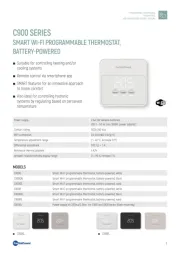
12 Augustus 2025
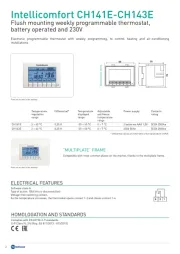
18 Juli 2025
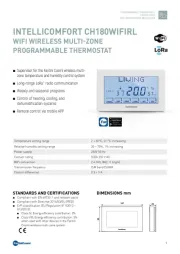
17 Juli 2025
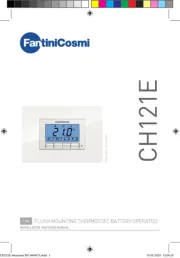
17 Juli 2025

31 Maart 2025
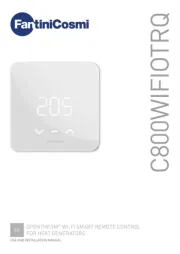
31 Maart 2025
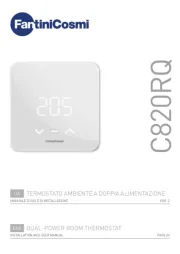
31 Maart 2025
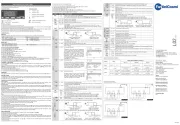
31 Maart 2025

31 Maart 2025

31 Maart 2025
Handleiding Thermostaat
- Schwaiger
- Alecto
- Rose LM
- REMKO
- AcuRite
- Nefit
- Emerson
- Basetech
- Elco
- Profile
- Perel
- Brennenstuhl
- Maginon
- ORNO
- Qubino
Nieuwste handleidingen voor Thermostaat
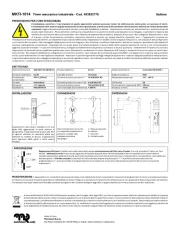
2 September 2025
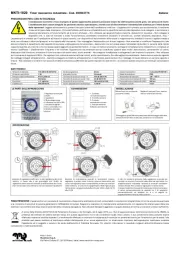
1 September 2025
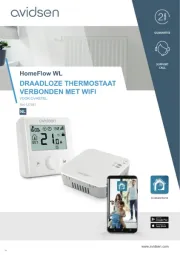
30 Augustus 2025
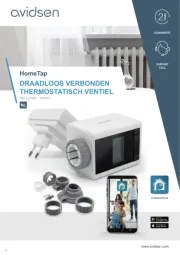
30 Augustus 2025
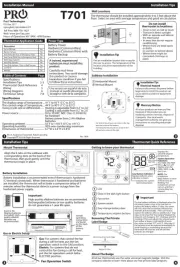
26 Augustus 2025
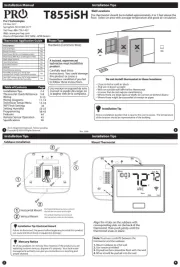
26 Augustus 2025
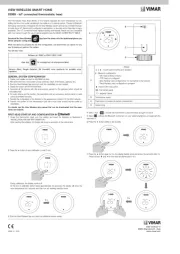
26 Augustus 2025
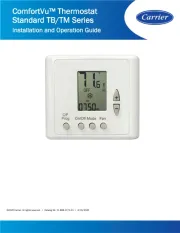
26 Augustus 2025
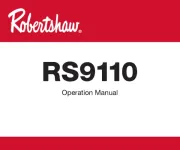
26 Augustus 2025
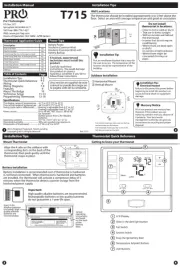
26 Augustus 2025